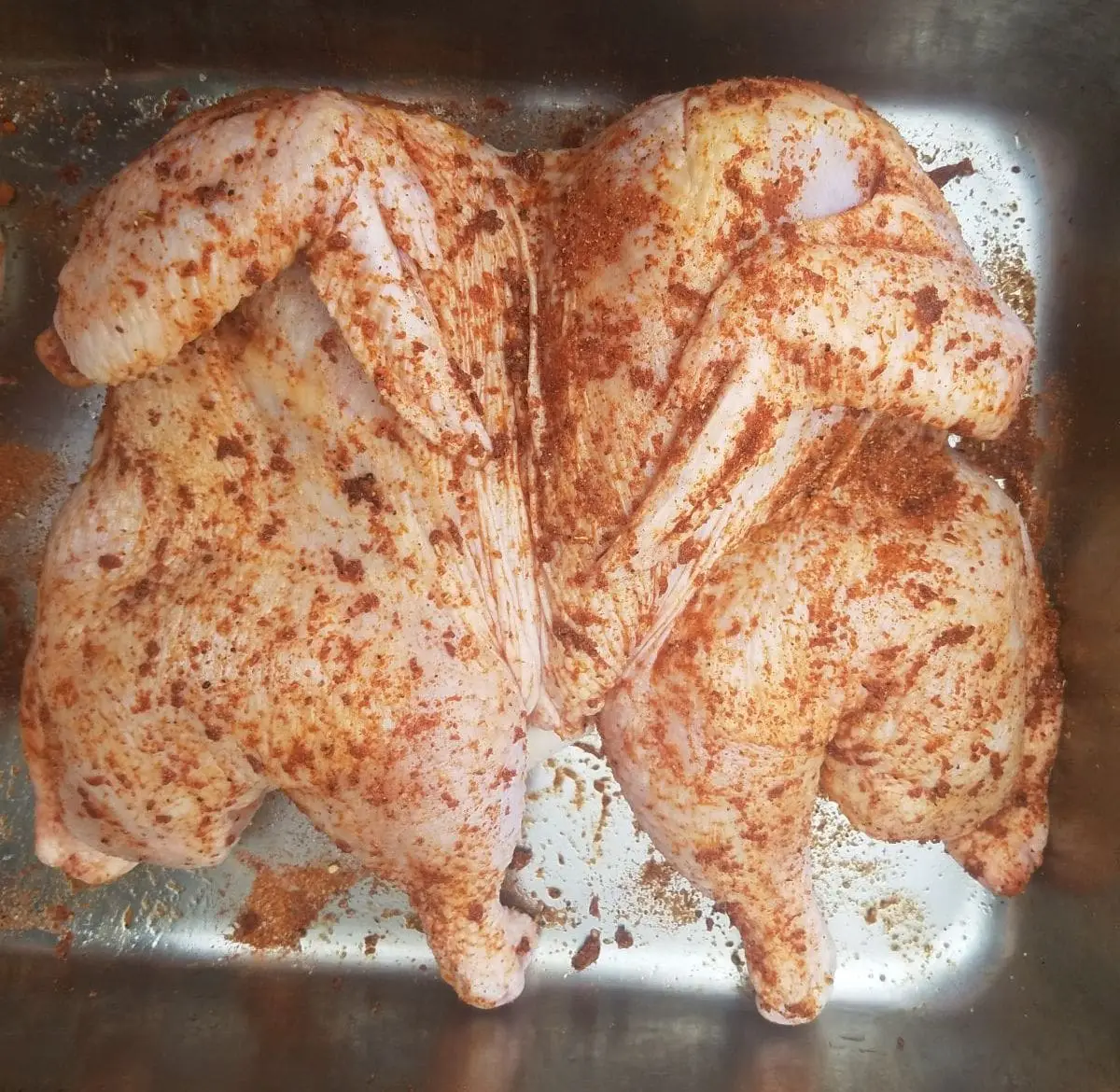For our table we often spatchcock whole chickens for the fastest and most consistent way to roast them. But we realized that not everyone knows how to do it, so we’ve saved you the work and made the cuts so you too can enjoy a perfect roast chicken every time. Available in the farm store here.
Spatchcocking is not new, but it is popular these days, perhaps because the word just sounds so much more fancy than the old term “butterflying”. But whichever moniker is used, it works because the entire chicken is heated more evenly compared to roasting a chicken with the backbone intact. In the traditional style, the breast can be overcooked because it is the most exposed portion of the chicken, whereas the legs, which need the most heat, are tucked down below. Spatchcocking gives the best results of any method I know.
There are a lot of recipes out there, but the premise is so simple that you really don’t need to know anything other than the following framework:
- Flatten the chicken and place skin side up in a roasting pan. The breast should lay flat, but if it doesn’t, just give it a little push into position with the heel of your hand.
- Splash on a little olive oil or a smear of melted butter, add a generous layer of salt, and sprinkle with whatever herbs are handy.
- Place in a hot oven (450 or even 500 if you keep a watchful eye on it), and roast for about 45 minutes. Remove from oven when the breast at about 150 and the legs are at 175 or even 180. In many ovens, the back is hotter than the door side, so place the legs facing the back. Since each oven heats uniquely and since the size and shape of each chicken isn’t identical, start checking temps at about 20-30 minutes into the cooking process to see how things are going.
A digression on cooking temperature. The US Government wishes to warn its citizens to be deathly afraid of any chicken product cooked at less than 165 degrees. But I’ve found that if we cook food to government specifications, it tastes pretty much like overdone, bland bureaucrat. I don’t look to government agencies for instruction on which foods are healthy, or which pesticides are safe, or which people are dangerous, so I don’t feel compelled to abide by their cooking instructions either. Breast meat is perfect at 150 degrees. Legs and thighs, particularly on truly pasture raised chickens that actually walk around on grass, can benefit from higher temps (170 up to somewhere in the low 180s) since the additional heat helps soften the collagen.

Sorry, we didn’t take any pictures after it came out of the oven – we were ravenous after a long day in the hot sun and we weren’t in the mood for picture taking. But it looked good and tasted better.

2 thoughts on “Spatchcocked Chickens in Stock!”
DAAAAVEEE!
You have changed my life forever.
I will splay my clocks (or cocks) from now until forevermore.
Hopeful for a less raw bird coming out of the oven next go around, India* sent from my iPhone
>
Hi India, if you can’t get the chickens cut this way where you are, here’s a link to a nice straightforward video showing the cutting and cooking process. The end of the video includes info on making a sauce, but that’s an optional step. It will come out nicely just roasted too.
https://www.youtube.com/watch?v=QuWPLhC8ijs